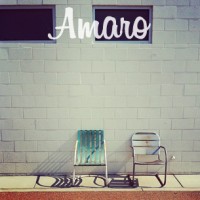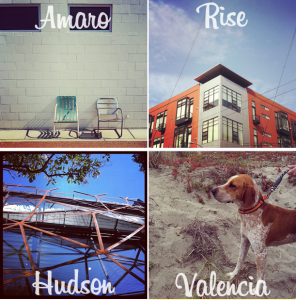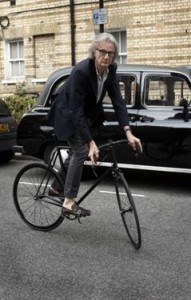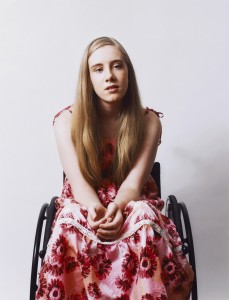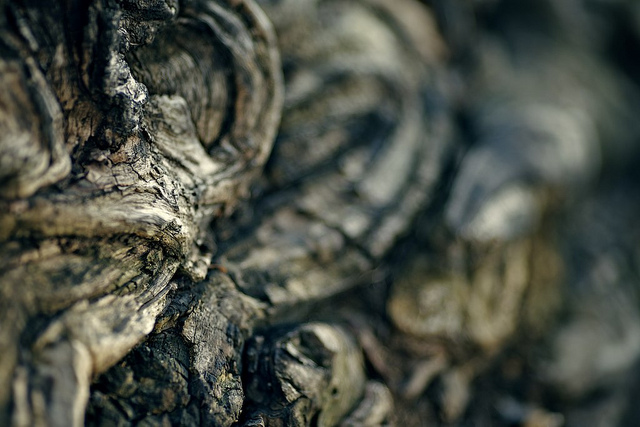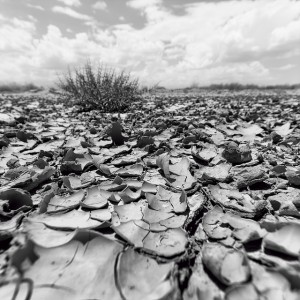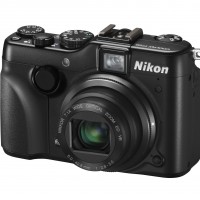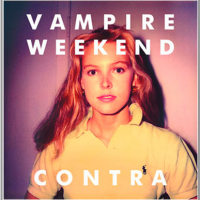
Illustration photo by Flickr user ssoosay
"There they are", says the man sitting next to me in the Honda Civic, and both our hands go to our radios, covering up the tell-tale little brightly lit square that pierces the darkness whenever the dispatcher or one of my colleagues transmits on his radio. Usually, I carry my radio with pride. Today, it may be just the thing that could get me recognised and subsequently seriously injured.
The place is London. It's in the first week of August 2011, and tensions are running high. Night has fallen. Less than a mile away, we know there are a series of running battles going on between rioters and riot police. Anything that is happening there, is happening on a different radio channel. Inside our little black car, the radio stays eerily quiet.
There are only two of us. We don't have guns. We don't have shields. We don't have riot gear. The only things we have to defend ourselves is a stick and a fist-sized deodorant can filled with mixed spices. A call comes in. "We've just had another I-grade call. A large group of youth is gathering", along with a street name. The name of the street is the name of the street we are on. The next thing I know is that we come around a bend, and we can see it all in front of us.
An ambulance is coming the other way, towards us. Its sirens are blaring and its blue lights are flashing, but it is not making the kind of progress you would expect from an ambulance rushing back to the hospital in its effort to save a life. The crowd is in the way, and the ambulance has to slow down to less-than-walking pace. The youths in the crowd show little interest in moving out of the way. They are looking at it. We're looking at them.
There must be forty of them. Fifty perhaps. There's a couple of faces I've seen before, and my mind is feverishly trying to associate them with known gang members, past victims of crime, anything that can help me figure out exactly what the hell is going on.
Some of them them are on bicycles. Many have their faces covered by scarves. More than a few are carrying sticks, bats and pieces of scaffolding. Some have made an attempt at hiding their weapons, and others are raising them in the sky, as if to say "Look at me. Today, the streets are mine".
Then I spot the really worrying part: A couple of people are holding wine bottles. It all clicks into place. I know my police station has already lost a few police cars to arson; that the mood among some of the youths we encounter is, shall we say, not wildly enthusiastic about the police; that if these guys are, indeed, gang members, that they might finally decide that this is their chance for payback; that those wine bottles are relatively unlikely to contain wine. Images from my public order training - part of which is a petrol bomb demonstration - flash in front of my eyes.
For the first time in my year-and-a-half as a voluntary police officer, I'm afraid. Cold palms, shallow breath, and a god-awful rush of adrenaline. Time slows down, and I'm looking around for options. What if they surround our car? What if I have to run for it? What if I have to defend my colleague? What if something happens to that ambulance? What if... What if...
I see one of the youth lift up a cigarette lighter and the wine bottle. I see the flint of a lighter sparking brightly in the night, and for a very brief moment, it is the only light source lighting up the universe. I know there is no way it could be possible, but I would merrily swear on a bible that I could hear the cigarette lighter from inside the car.
"Uhmm", I hear my colleague saying, as he is surveying the scene in front of us, "Let's go the other way". He stops the little car dead, backs calmly into a side road, turning the car around, whilst I do my duty as an operator. I reach for my radio. "Golf Delta receiving...". My own voice crackles as I hear it loop back through the in-car radio set and my colleague's personal radio. I sound even less like myself than I do normally, as encryption protocols, interference, echo, feedback, network overload and fear are mixed together in a delicious comms cocktail.
"Go ahead", comes the reply. "We're on location of your last", I say, referring to the call that was put out seconds earlier. "We've just encountered a group of forty to fifty youths, some of them are believed to be armed with petrol bombs". I hold the push-to-talk button for what feels like an eternity whilst I try to get my wits together for how I'm going to round off the transmission. "Eh, we're going to turn around".
I recognised the composed-as-ever voice of the dispatch operator when she first put the call out. I have no idea what her name is or what she looks like, but for the occasion, images of Angelina Jolie with a microphone headset are flashing through my mind. She is rapidly typing the information she has been relayed by yours truly. "Received", she says, waits a beat, and adds "Be careful".
The dispatcher enters the intel into their computer-assisted dispatch system (CAD), and it is presumably handed over to a group of fire-proof superhumans known as "Level 1 officers" in the Metropolitan police - or "riot police" to everybody else. It is with a tinge of disbelief that I recall that "riot police" actually have the same tools at their disposal as I do. Sure, they have full-body padding, a helmet, a fire-retardant suit, and a shield. But where it matters, they are the same as us. Still police officers. Still human beings. Still carrying only a truncheon (if slightly heavier duty than mine) and a (slightly bigger) bottle of CS spray, and a picture of their children in their wallets.
I look behind us, as we've just about turned the car around. The ambulance has nearly made it through the crowd. One of the youths throws something, and I see the street lights reflect in an item made of dark glass flying through the air. The ambulance has finally cleared the group of youth and accelerates away, past our police car. On auto-pilot, both my colleague and I raise our hands to the paramedics: You never know if they're saving your life next.
The bottle thrown by one of the hoodlums shatters into a thousand pieces onto the dark asphalt, and I'm expecting the next vision to be a massive fireball trailing the Ambulance, engulfing the street in an inferno of heat, smoke, and fire. But nothing happens, and as we drive away in search of a call we are equipped to deal with, I wonder: Did the rag not catch fire? Did the wind extinguish the flame before the bottle impacted on the ground? Could it have been empty or filled with wine or water?
I'll never know, but I was relieved to see the crowd get smaller in our rear-view mirrors.
And that was only the first five minutes of my 14 hour shift...
Photo credit: Image is (cc) Soosay on Flickr.
Metropolitan Special Constabulary
For the past few years (since May 2007, or thereabouts), I have been living in London. I love the city for its multitude of different people, its opportunities, its nightlife, and its people.
When I left my old job, I decided to give writing full-time a go. Setting my own hours, picking my own tasks, designing my own workload: It was a dream, but I was missing one key point to all of this - I had a lot of colleagues in the past, and working on my own was a rather lonely experience.
So I started looking for a voluntary job. It took me a while to find one; one of the key things I wanted from a voluntary job was personal development: I don't care about being paid, but I wasn't completely altruistic in my approach either: I did want something back. Specifically, I did want to feel like I'm making a difference, I wanted some training, I wanted to learn some new skills, I wanted flexibility to do as much or as little volunteer work as I could spare the time for, and I wanted some structure. It turns out that there aren't a lot of voluntary positions out there that tick all these boxes. Then one day I spotted a poster on the underground advertising for special constables.
I thought about it for a while, and eventually sent off my application to be a member of the oldest police force in continuous service, the Metropolitan Police. Specifically, an officer in the Metropolitan Police Special Constabulary - or the MSC, among friends.
What followed next was two days of entrance interviews and medical and physical checks, followed by legal- officer safety- and first aid (or "emergency life support", as it is more grimly known) training. Then one day, I went to a ceremony, where I was granted a Warrant Card. I was now in Her Majesty's Service.
If you've watched a little bit too much television, you are now imagining images of me being handed 'a badge and a gun'. The truth couldn't be further removed; according to Wikipedia, there are only 6,780 police officers that carry guns in the UK. Given that there are a total of around 140,000 police officers in all of the UK, that means that less than 5% of officers carry firearms. Unsurprisingly, the volunteers aren't chucked a side-arm, a box of ammo, and a pat on the back for good luck.
Instead, we are issued with a stab vest, a friction-lock expandable baton, incapacitant spray, a pair of handcuffs, and various other bits and bobs, including our radios and personal first aid kit etc.
If you're in the UK; most police forces use special constables, check out their recruitment websites to find out how to join.
Worth noting: A few details in this story have been changed, as I cannot speak about the events exactly as they happened: There are still ongoing investigations into the public disorder. Consider it a piece of fiction, if you will, but I was there, and I believe it conveys the feeling of what it was like to be out there, as a police officer, when there's a riot going on. Finally, all opinions in this piece are my own, and do not reflect the policies or opinions of the Metropolitan Police, or, indeed, anyone but myself.
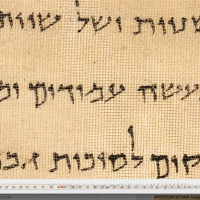






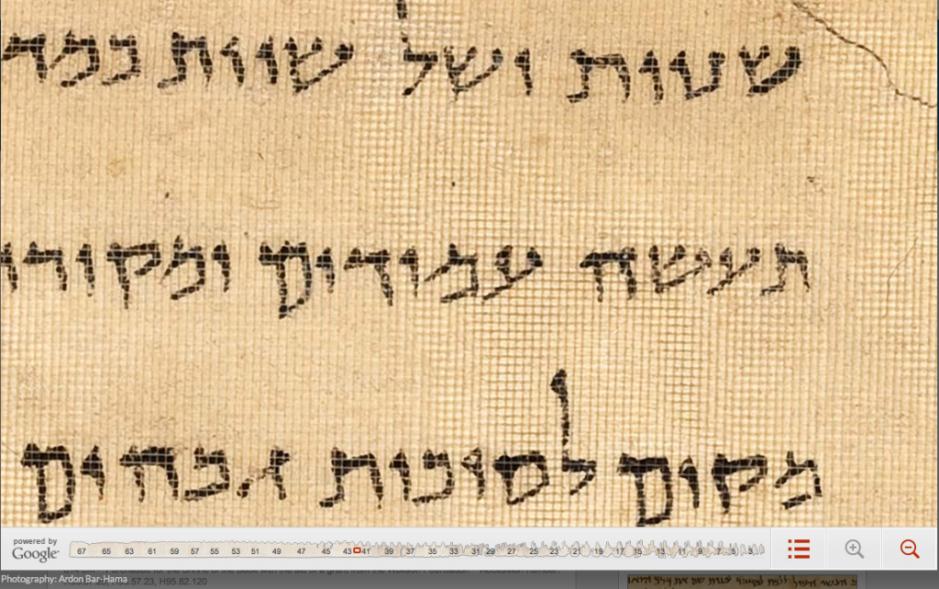

 What is this? - In our NewsFlash section, we share interesting tidbits of news. Think of it as our extended twitter feed: When we find something that get our little hearts racing, we'll share it with you right here! Loving it? Great, we've got
What is this? - In our NewsFlash section, we share interesting tidbits of news. Think of it as our extended twitter feed: When we find something that get our little hearts racing, we'll share it with you right here! Loving it? Great, we've got 
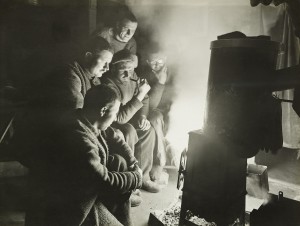

 If you're anything like me, you'll walk around merrily with your camera slung over your shoulder. After all; you can feel the lens strap against you, right, so you'd know if someone was trying to steal your camera. Right? Right? Well... Yes.
If you're anything like me, you'll walk around merrily with your camera slung over your shoulder. After all; you can feel the lens strap against you, right, so you'd know if someone was trying to steal your camera. Right? Right? Well... Yes.

 As far as we understand, this means that 500px users can no longer use the 500px Store, although
As far as we understand, this means that 500px users can no longer use the 500px Store, although 
 So, who dumped who? And why? Did 500px ditch Fotomoto because they think they can do a better job themselves (and, presumably, with bigger profits)? Or did Fotomoto decide they weren't getting the support they required, and were at their wits end with 500px?
So, who dumped who? And why? Did 500px ditch Fotomoto because they think they can do a better job themselves (and, presumably, with bigger profits)? Or did Fotomoto decide they weren't getting the support they required, and were at their wits end with 500px?